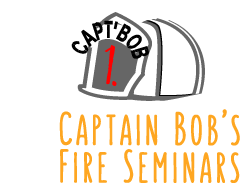Let’s say you are in the process of applying for a firefighter job. What factors play into the hiring panel’s first impression of you? Naturally, your physical appearance. Your choice of words, eye contact, your attire and your handshake are also very important. But you may have overlooked the most important factor in making a good first impression – your application and resume before you walk into the room.
I can’t tell you how many times we’ve seen applications with misspelled words, poor grammar, and sloppy organization. It certainly gives me a negative first impression of the candidate, before I’ve even had the chance to meet them in person.
Putting in that extra effort to build a solid and well-crafted resume could be the deciding factor in getting hired. And having reviewed thousands of applicants’ resumes in my lifetime, I’ll provide you a few tried-and-true tips on writing a strong resume.
Unfortunately, the sad truth is that most resumes are poorly done. Many applicants will simply copy a generic business-style resume format, which usually features paragraphs that drone on and on about accomplishments and experience. This is not very well-suited for EMS/firefighter/paramedic jobs due to the high volume of candidates vying for the same positions. Reviewers only have a few moments to look at your resume before you walk into the room, so you need to grab their attention immediately.
I’m a huge fan of the one-page resume for entry-level hires; don’t even bother with a cover letter or a resume folder. Save a tree by being concise and don’t make the job panel send out a search party to find your good stuff. Try imaging that the reviewer won’t spend more than 60 seconds looking over your resume. Hit them with your major qualifications and experience right away on one page.
Here are a few other points to consider:
- Don’t list your education as the first item on the resume. That’s for business/corporate interviews. You should highlight your key work experience right away. EMT certification. Bam. Firefighting experience. Bam. Apparatus operation training. Bam.
- Your experience doesn’t necessarily have to be listed in chronological order. Try building your resume with the most pertinent experience and information at the top of the page. I remember one candidate telling me that his paramedic certification and firefighting experience were his best qualifications. Yet he listed it at the bottom of his resume where it can be easily overlooked.
- You should include the dates of qualifications and experience on the right side of the page where it can be easily referenced. This allows for more freedom when formatting the order of your resume.
- Then supplement your qualifications with education, course work and other secondary extracurricular information at the bottom of the page to balance out your applicant package.
Here is how I would suggestion organizing your resume: BOB’S SAMPLE RESUME HERE
